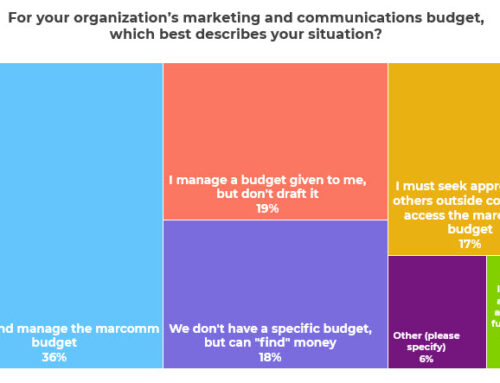It’s so exciting . . . you get others in your organization to finally focus on communications and you create a marketing strategy. Or maybe you set aside the time to finally create your editorial calendar.

You are fired up!
And then . . . it just sits there, never to be looked at again.

What the heck is going on?
A few things, likely, and here’s what to do about them.
Did your plan address only part of your workload?

Too often communications plans and strategies focus on the exciting things you know you should be doing in the future, without taking into account all the less exciting things that you have already committed to doing or that are foundational steps to the new work.
You know what those things are, but you leave them in your head, without acknowledging how long all of that stuff really takes. The plan needs to acknowledge all of that work, because if it doesn’t, you’ll end up ignoring it for “when you have more time” which is never.
Was the plan too aspirational?

You might also be working in an organization that would rather not acknowledge unrealistic expectations for communications staff and instead labels the mountain of work as “aspirational” or “stretch goals” and then fails to provide any additional time, talent, or money to achieve those goals.
Or when planning, you may assume that other people will be helping you, but then that teamwork never materializes. Therefore the plan doesn’t match reality, at all. So why look at it? That’s just depressing.
Does the plan make room for everything else that will come up?

If your plan includes so much work that you are fully booked (or more likely, overbooked) by what’s in the plan, you are doomed from the start.
The reality of communications work is that it has to be responsive to what’s happening in the real world. And you can’t predict exactly what that will be or when it will happen. But you can predict with certainty that SOMETHING will come up, probably a lot of somethings!
That means you need to pad all of your advance plans with time to manage all of the inevitable new things. We talk about the Rule of Thirds in editorial planning, and that really applies to all communications planning.
Does that plan explicitly set boundaries or include ways to filter through new ideas and requests?

Because you know for a fact that lots of new things will come up, how will you decide what to do and what to take a pass on?
Your plans should be the filter through which all new ideas flow! You may not literally ask yourself if that new request will spark joy, but you need the functional equivalent. Will that new idea, task, or project get you closer to the stated goals and objectives in your plan? Or should you really just leave it alone?
Oh, wait, you don’t have objectives in your plan? That too is often part of the problem. Check out our advice on measuring communications success.
Did you put it someplace you never look?

Out of sight, out of mind! We see this all of the time with editorial calendars in particular. You build it in software no one uses for anything else. Bad idea! Put the paln where you are already going regularly, so you are likely to stumble on it and see it whether you want to or not.
To increase the odds that you will actually use your plan, make sure it . . .
- Includes all of your work, not just the new, fun stuff
- Is realistic given the actual resources, including time, that will be available to implement it
- Includes plenty of cushion to absorb all the other things that will come up
- Includes simple ways to decide whether new ideas should be pursued or not (objectives can be helpful here too).
- Is located or built within software that you look at regularly for other reasons
Here’s to a better plan!






